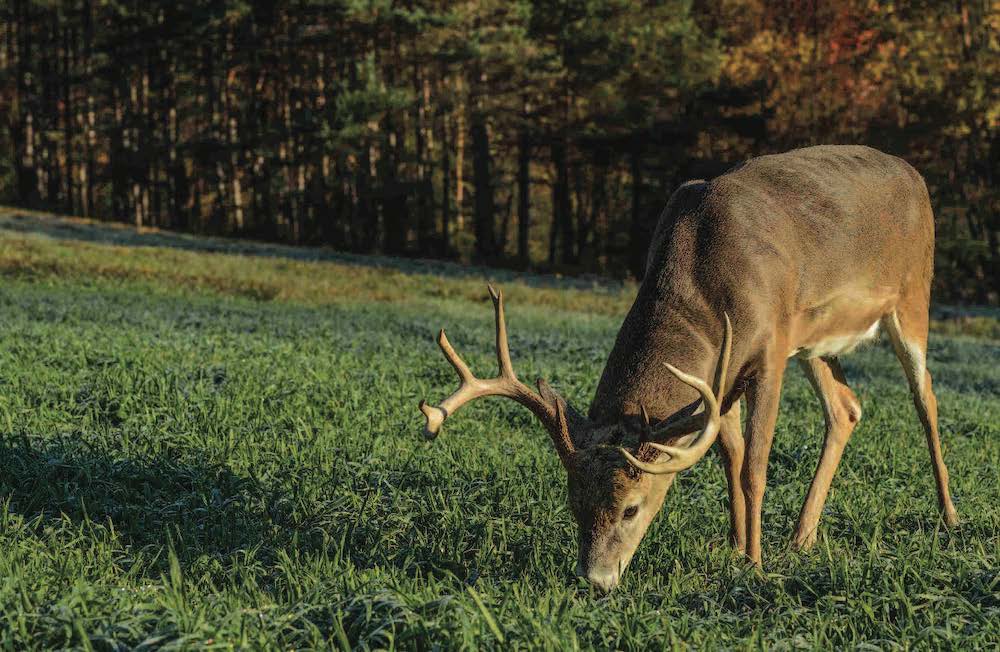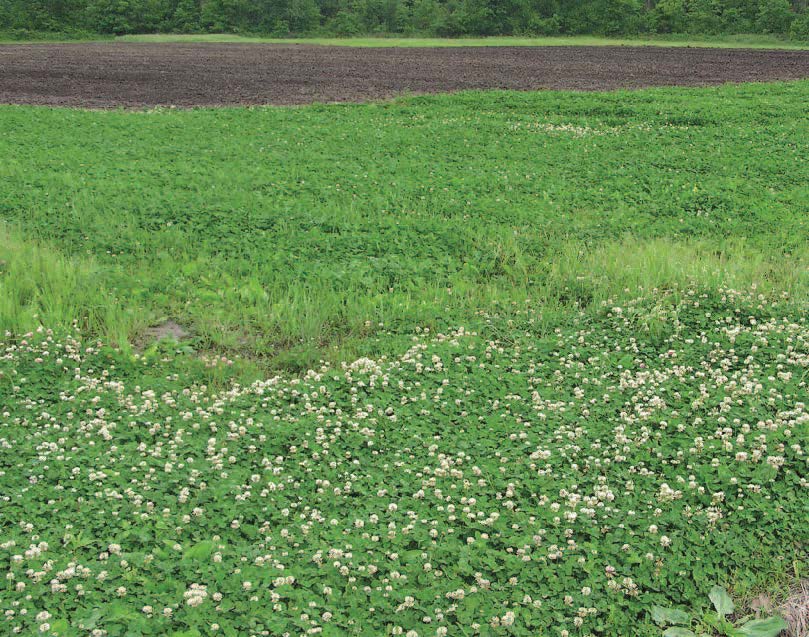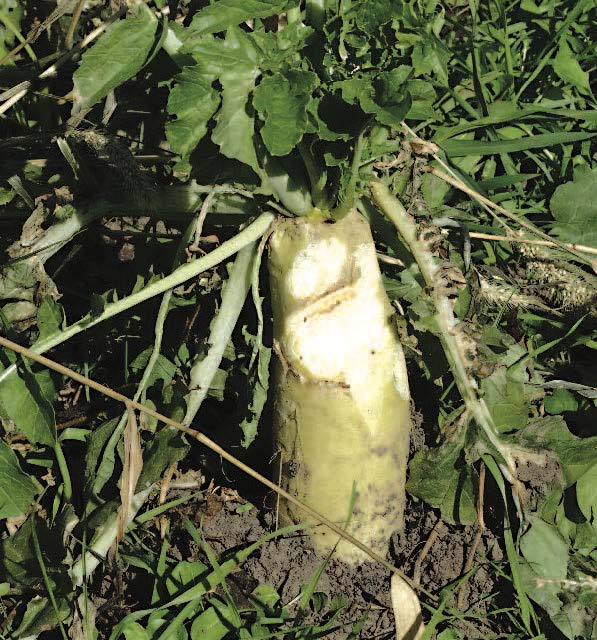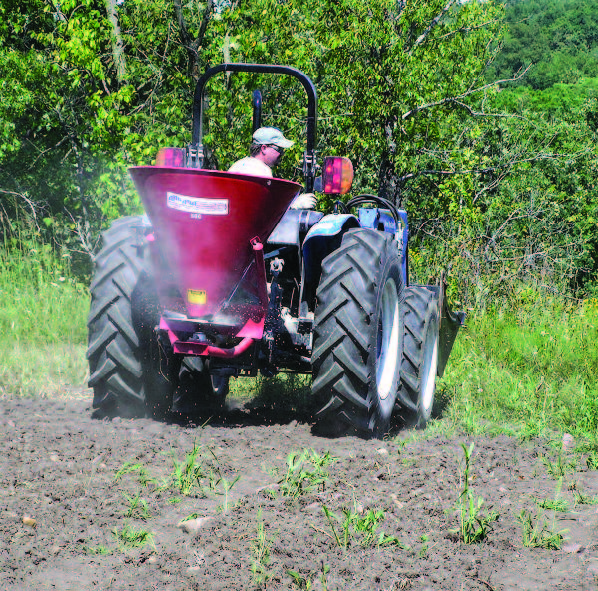Crop Rotation
By: Matt Harper

When I was very young, I was taught that we were caretakers of the land we farmed. The taking and giving relationship with our land was of equal importance. That played out in many ways, such as fertilizing our crop fields to replace nutrients or vigorously fighting noxious weeds that, if left unchecked, could take over and destroy the farm.
To be honest, I really didn’t understand the full meaning of stewardship. Of course, I knew that fertilizing would make crops grow better, and making sure the cows didn’t overgraze the pastures meant the pasture would stay productive. As I grew older, I began to become more interested in the why, in a broader sense. When I bought my first piece of ground, the why became apparent. I really only bought the right to use the land and collect the resources from that farm. That land was there long before I came into the picture and will be there long after I’m gone. But during the time I “own” the farm, I’m really the steward of the land and its resources, and in charge of the delicate balance of giving and taking. That’s the definition of a steward: someone who’s in charge of taking care of something.
With a farm, everything revolves around the soil, because everything on that farm depends on it. The grass, the crops, the trees and all plant life depend on the soil. In turn, the animals that eat the vegetation and, further, the predators that eat those animals complete the cycle. Even the insects, bees and birds depend on the soil. Without soil, a farm is nothing but an empty space. That’s why so much time and attention is given to building and maintaining healthy dirt.
Of course, many other management practices come with running a farm, but it starts with the soil. It’s the foundation.
Soil Management
Soil management is a massive topic, with hundreds if not thousands of methods and practices you can implement. In fact, you can earn a doctorate in soil management and still not be fully knowledgeable of all soil management practices that pertain to specific soil types or regions. However, you can understand and implement a few universal basics in most soil management programs. At the top of the list is soil fertility. Plants derive nutrients from the soil and use them for growth. The most common of these are nitrogen, phosphorus and potassium, although there are many other minor (but often important) nutrients, such as zinc, magnesium and boron.
As plants deplete the soil of these nutrients, the nutrients must be replenished. Some nutrient replenishment can happen naturally, but that takes a long time, and when the ground is being used for production crops, you must apply fertilizer to keep the soil nutrient-rich and able to support optimal production. You’ve probably heard of aerating your yard or have seen aerator marks on a golf course. Healthy soil that can support productive crop production requires oxygen, and through time, soil can become compacted or root-locked, creating several problems.
First, compacted soil does not soak up rain and has a tendency to drain quickly, losing the opportunity for valuable moisture. Second, compacted soil does not have adequate oxygen, so breaking the soil up with a plow, disc or chisel plow will help aerate the soil, but there are other options we will discuss later. Finally, unless soil is managed properly, it can become laden with pathogens such as fungal, bacterial or pest diseases. Although some kinds of microorganisms are vitally important in healthy soil, others are parasitic or cause disease issues in the crops the soil supports. Those pathogens are harbored in the soil and can have a negative effect on the current and subsequent crops grown there.
 Crop Rotations
Crop Rotations
You might wonder why I’m just now addressing the title topic. The aforementioned points are related to and can be influenced by crop rotation. The definition of crop rotation is fairly self-explanatory. It’s the practice of substituting one type of crop with another in a field or food plot. But the effective practice of crop rotation is a bit more complex, as many considerations come into play. Before we get into specific rotation strategies, let’s discuss crop rotation as it applies to aspects of soil management.
The most commonly practiced crop rotation in farming is corn and soybean rotation. One of the main reasons for that is that soybeans are considered a soil builder. Being a legume, they are a nitrogen-fixing plant type. Almost all organisms require nitrogen for protein, amino acid and nucleic acid production, along with other vital components that contain nitrogen. There’s an abundance of N2 (nitrogen gas), but most organisms cannot use it unless it’s converted into NH3 (ammonia).
Legumes contain a nitrogen-fixing rhizobia bacteria that converts N2 to NH3. These bacteria live in nodules on the roots of legumes, and legumes use the converted nitrogen for growth. That’s why legumes such as soybeans, clover and alfalfa do not require nitrogen fertilizer. When the legume dies, the nodules release nitrogen into the soil that can be used by the next crop that will be planted in that field.
Corn requires a high amount of nitrogen for optimal production, so planting corn in a field that was previously in soybeans means nitrogen fertilization can be decreased, thus saving the farmer money and producing a healthier soil. That relationship is not limited to corn and soybeans but can be found in any legume and non-legume crop rotation. For example, if you have an Imperial Whitetail Clover field that needs to be replanted, a crop such as Winter-Greens, Pure Attraction or Whitetail Oats Plus, require nitrogen fertilization and will benefit from the nitrogen left by the Imperial Whitetail Clover field.
As mentioned, compacted soil can cause poor food plot performance but can be fixed through various aeration practices. Although mechanical aeration is effective and should not be omitted from your soil management program, various forage types can help break up and aerate the soil. Food plot plantings that contain larger tuber root structures, such as Tall Tine Tubers or the new Beets & Greens from the Whitetail Institute will break up the soil as they grow their bulbous root structure and at the same time naturally aerate the soil.
 That application is effective when rotating out of a perennial that has been planted for three to five years, or for areas that have experienced minimum tillage for years. For example, if you’re replanting an Imperial Alfa Rack Plus field that has been in production for five years, rotating into a product such as Tall Tine Tubers, Beets & Greens or Winter-Greens can help break up and aerate the soil. Also, if you have a field where you have planted Imperial No-Plow for two or three years with minimal tillage, Winter-Greens or Winter Peas would be a great option. Keep in mind that at some point, you’ll still need mechanical aeration, but that type of crop rotation will help produce a healthier soil.
That application is effective when rotating out of a perennial that has been planted for three to five years, or for areas that have experienced minimum tillage for years. For example, if you’re replanting an Imperial Alfa Rack Plus field that has been in production for five years, rotating into a product such as Tall Tine Tubers, Beets & Greens or Winter-Greens can help break up and aerate the soil. Also, if you have a field where you have planted Imperial No-Plow for two or three years with minimal tillage, Winter-Greens or Winter Peas would be a great option. Keep in mind that at some point, you’ll still need mechanical aeration, but that type of crop rotation will help produce a healthier soil.
The challenge of disease occurs with almost all plant types and food plots. Again, diseases are caused by pathogens such as fungi, bacteria, viruses and nematodes. Depending on the pathogen, diseases can damage the leaves, stems, roots and crown, and are sometimes highly visible. Other times, however, they are not. Weather conditions also affect the severity of diseases, with some diseases being more prevalent in wet, humid or dry conditions. Most pathogens live in and accumulate in the soil, so the combination of the right environmental conditions along with the total number of pathogens present will relate to the severity of disease issues.
Some pathogens can live in the soil for many years, but others die more quickly when the target host-plant variety is no longer present. Also, some diseases attack multiple family types of crops and forages. However, crop rotation can still help to prevent disease. In terms of food plot plantings, an effective disease management technique using rotation is to go from a legume to a non-legume or vice versa. Rotating crops can help diminish the likelihood of disease.
 Rotation in Practice
Rotation in Practice
How do you apply this information? If you’re a farmer, rotating fields between corn and soybeans is not necessarily all that difficult in terms of planning. However, when devising your strategy for food plot rotation, many other factors come into play, such as perennial fields versus annual fields, what grows well in specific soil types and how those food plots are being hunted.
The first thing to consider is what plants work well in rotation with each other. I gave a few examples earlier, but there are many more to consider. The good thing is that the Whitetail Institute offers a large variety of annual and perennial plantings, many of which can be used in your food plot rotation. In general, I like to rotate between legume and non-legume species. Rotating Imperial Whitetail Clover or Alfa- Rack Plus with Winter-Greens, Pure Attraction or Whitetail Oats Plus will work well, but you can also consider other options.
Alfa-Rack Plus generally grows better in well-drained soils, but Imperial Whitetail Clover grows better in heavier soils. Therefore, the crop you rotate with must also grow well in the same type of soil. For example, Winter-Greens works better in a well-drained soil, so it should be used in rotation with a legume that matches the same soil preference.
I think the trickiest part in developing a rotational plan when planting food plots occurs when you throw your hunting strategy into the mix. For example, let’s say you have a food plot that’s set up perfectly for hunting during the early to mid-season. Your choice of planting is usually Pure Attraction or Whitetail Oats Plus. There could be some benefit to rotating between those products, but a better rotational option might be Winter Peas Plus. Winter Peas Plus are a legume that work great as a hunting plot during the early and mid-season and fits nicely into the legume, nonlegume rotation.
If you’re working with bigger fields — one acre or more — depending on herd size, other plots and browsing pressure, smaller fields can work, too. Another option is multi-variety plantings. Half of the field is in Winter-Greens and the other half in Winter Peas Plus, and you simply rotate them back and forth from year to year. This type of rotation can also be performed with a perennial. Simply plant half the field in a perennial and the other half in an annual non-legume. Maintain the perennial, and rotate the annual half of the plot between annual legumes and non-legumes.
At the point the perennial field needs to be replanted, switch halves of the field. I have a large 3-acre plot I broke up into specific food plot plantings I rotate each year. Fortunately, the soil lets me plant about whatever I want so I have up to five food plot types at any time. I have a half-acre of Imperial Whitetail Clover at all times and four plantings of annuals I rotate each year. Then every four to five years, I rotate out my Imperial Whitetail Clover field with a couple of the nonlegume annual fields. This has been one of my most productive hunting areas through the years, as it offers an attractive food plot with a variety of different plants all season.
Summary
To me, being a good steward of the land, you have leased, own or just have permission to hunt is as much a part of being a good hunter as practicing with your bow or setting up the perfect stand location. To get as much as the land can provide takes work, but it’s rewarding beyond having a good hunting season. Land stewardship has many facets, and implementing a soil-healthy crop rotational program is just one. But it’s important and can result in productive food plots, which, of course, equals a productive deer herd.
